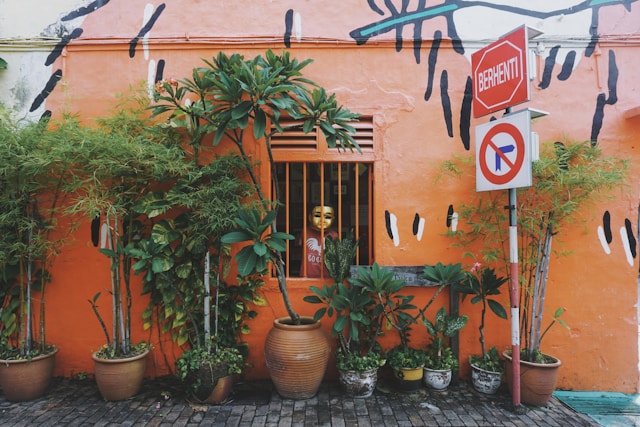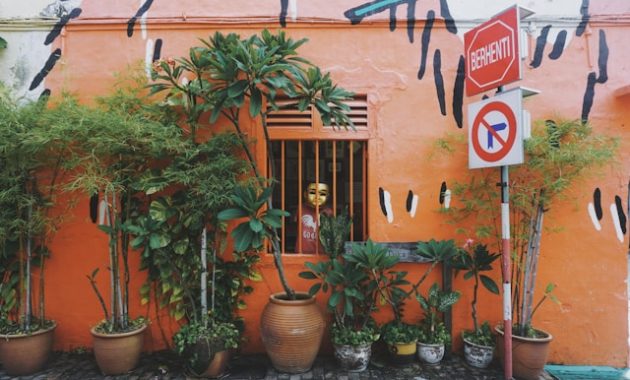
Malaysia is a nation renowned for its rich cultural diversity, influenced by centuries of trade, colonization, and the coexistence of Malay, Chinese, Indian, and indigenous communities. The country’s heritage sites stand as testaments to this vibrant blend of histories and traditions, offering visitors a glimpse into Malaysia’s unique cultural fabric. Join us as we journey through some of Malaysia’s most iconic cultural and heritage sites that showcase its remarkable cultural legacy.
Penang – A Blend of Colonial and Asian Heritage
Penang, often celebrated as Malaysia’s “Pearl of the Orient,” is a UNESCO World Heritage site rich with colonial architecture, vibrant street art, and diverse cuisine.
Georgetown: A Walk Through Time
The heart of Penang’s heritage is Georgetown, a city known for its well-preserved colonial architecture and multicultural influences. As you walk through its streets, you’ll see a mixture of Chinese shophouses, British colonial buildings, Indian temples, and Islamic mosques. Notable highlights include:
- Cheong Fatt Tze Mansion – Also known as the Blue Mansion, this heritage building combines Chinese and Western architectural styles.
- Fort Cornwallis – A historical fort from the British colonial period, representing the start of Penang’s colonial history.
- Khoo Kongsi Clan House – A masterpiece of Chinese heritage with intricately carved pillars and colorful murals, showcasing the prominence of Chinese clans in Penang’s history.
Georgetown is also famous for its street art and traditional coffee shops. Art murals scattered around the city portray scenes from everyday life, while the cafes and food stalls serve up Penang’s world-famous cuisine like Char Kway Teow, Assam Laksa, and Nasi Kandar.
Melaka – The Historic State of Malaysia

Melaka, or Malacca, is another UNESCO World Heritage site that tells the story of Malaysia’s multicultural legacy, shaped by Portuguese, Dutch, and British influences over the centuries.
St. Paul’s Hill and Church
At the top of St. Paul’s Hill, you’ll find the St. Paul’s Church, one of Southeast Asia’s oldest. Built by the Portuguese and expanded by the Dutch, this church offers panoramic views of Melaka’s coastline. The ruins are a serene reminder of Melaka’s colonial past and serve as a popular tourist spot.
A Famosa Fort
The A Famosa Fort, constructed by the Portuguese in the 16th century, is one of the oldest surviving European architectural remains in Asia. Though most of the structure was destroyed, the Porta de Santiago gate still stands, showcasing an impressive feat of historic architecture and engineering.
Jonker Street – A Cultural Marketplace
Jonker Street is famous for its vibrant weekend night market and the blend of Baba-Nyonya, or Peranakan culture. Here, you can experience Melaka’s unique cuisine, purchase handmade crafts, and appreciate the Chinese-Malay influence that’s evident in the street’s architecture and stalls.
Borneo – Preserving Indigenous Cultures
The Malaysian states of Sabah and Sarawak on the island of Borneo are home to indigenous cultures, including the Iban, Kadazan-Dusun, and Murut tribes, each with its own language, customs, and traditions.
Sarawak Cultural Village
Located near Kuching, the Sarawak Cultural Village offers a hands-on experience of Borneo’s diverse ethnic heritage. This “living museum” showcases traditional houses and exhibits the lifestyles of seven distinct indigenous groups. Visitors can witness traditional dances, participate in craft-making activities, and learn about the customs that have been preserved through generations.
Sabah’s Mari Mari Cultural Village
Sabah’s Mari Mari Cultural Village is another must-visit destination for those interested in the indigenous cultures of Borneo. This village offers an immersive experience in the daily life, crafts, and food of the Kadazan-Dusun, Bajau, and Murut tribes, among others. Guests can take part in cooking, bamboo crafting, and traditional tattooingdemonstrations, providing a firsthand look at Sabah’s indigenous heritage.
The Royal Town of Klang – Malaysia’s Historic Core
Located just outside Kuala Lumpur, Klang is known as Malaysia’s “Royal Town” and is filled with historic landmarks that celebrate Malay royal heritage and architecture.
Sultan Abdul Aziz Royal Gallery
The Sultan Abdul Aziz Royal Gallery is dedicated to the Selangor royal family. Here, visitors can explore royal artifacts, photographs, and historical documents that highlight the legacy of the Sultanate of Selangor, one of Malaysia’s most significant royal dynasties.
Little India District
Klang’s Little India District showcases Malaysia’s Indian heritage, with its colorful textiles, aromatic spices, and traditional jewelry shops. This bustling area also features authentic Indian cuisine and Hindu temples, including the Sri Nagara Thandayuthapani Temple, an architectural marvel adorned with intricate carvings.
Kuala Lumpur – A Modern Metropolis with Cultural Depth
Malaysia’s capital, Kuala Lumpur, is a bustling metropolis where modern skyscrapers coexist with historic temples and mosques.
Petaling Street – Kuala Lumpur’s Chinatown
Petaling Street, or Chinatown, is an area steeped in history, known for its vibrant marketplace filled with Chinese herbs, trinkets, and street food. It’s home to some of Kuala Lumpur’s oldest temples, including:
- Guan Di Temple – Dedicated to the Chinese God of War, this temple is a fine example of traditional Chinese architecture and symbolism.
- Sri Mahamariamman Temple – One of the oldest Hindu temples in Kuala Lumpur, adorned with colorful sculptures representing Hindu deities.
Batu Caves – A Hindu Pilgrimage Site
Just a short drive from Kuala Lumpur, the Batu Caves are an iconic heritage site and pilgrimage location for Malaysia’s Hindu community. The caves house a series of temples dedicated to Lord Murugan, accessible by ascending 272 vibrant steps. The site is especially popular during the Thaipusam festival, attracting thousands of devotees and tourists who come to witness the colorful celebrations and ceremonial offerings.
Conclusion
Malaysia’s heritage sites offer an unparalleled cultural journey through history, architecture, and traditions. From the colonial streets of Georgetown and Melaka to the indigenous villages of Borneo, each destination provides a unique glimpse into Malaysia’s rich and varied heritage. For those interested in experiencing a blend of Asian, European, and indigenous cultures, Malaysia stands as a captivating destination that is unmatched in Southeast Asia.